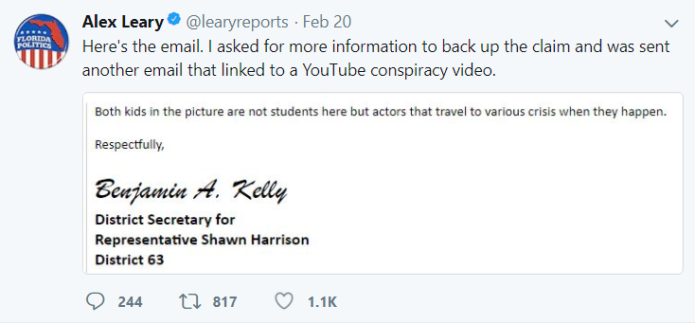Today was the March for Our Lives. Over 800,000 people marched in Washington, DC, and there were sister marches in 842 other cities. I attended the sister march in Toledo, OH.
When marches for various political issues happen, politicians who support the issue will usually come out and address the crowd.
But not this time.
Today, the speakers were students. At the march I attended, they thanked the various politicians who offered to speak, but their offer was declined. Today was a march, a movement led by students. And it was students who addressed the crowd in Washington, DC, Toledo, and in many other marches around the world today.
One of the students who addressed the march in Toledo today spoke about how she has been threatened for her public stance on common sense gun reform. Yet there she was, leading the charge.
Another student spoke out against the idea of arming teachers, and the many ways that could go wrong.
Yet another pointed out that school shootings of this magnitude are disruptive well beyond the school where they happen, since they inspire copycat threats. There have been hundreds of copycat threats around the country since Parkland, FL.
They all called on politicians to put the safety of students before gun rights, and called on the voting public to hold the politicians accountable if they don’t.
And this was just our small rally of several hundred people, instead of several hundred thousand. But the voices of these kids joined with those of the students who addressed other rallies around the country.
Emma Gonzalez, who shows us the power of silence.
David Hogg, who calls out those politicians who are in the NRA’s pocket, telling them to update their resumes.
Delaney Tarr, who calls on all of us to not let this march be an end, but rather a beginning.
Ryan Deitch, who calls for arming teachers with the supplies they need to teach their students, and arming students with information and knowledge, not guns.
Sarah Chadwick, who says that a single life is worth more thank all the guns in America.
Edna Chavez from South Los Angeles, who lost her brother to gun violence.
11-year-old Naomi Wadler, who speaks for all of the girls of color who have been victims of gun violence, but who don’t make headlines.
Alex King and D’Angelo McDade from Chicago, who speak of the need for communities to come together and do what is necessary to insure this never happens again.
I have observed protests before.
There was the Occupy movement, that didn’t end up accomplishing much.
There is the annual March for Life, which has had no real impact on abortion at the federal level.
There is the Black Lives Matter movement, which has seen some success in changes to policing policies, most notably the number of police departments which utilize dash and body cameras as standard procedure.
But this feels different from all of them. This is bigger. These students are driven. They are not going away. Many of them will be voting in November. Even more will be voting in 2020. And soon, within the next few election cycles, some of them will be running for office. And gun reform will be the pillar of their platforms.
Change is coming. And, frankly, if gun rights advocates want a voice at the table to help decide what that change looks like, they better find a compromise that they can live with now, before these kids push them out and make all the decisions without them.
The clock is ticking.


